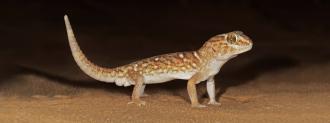A USC study that prompted lizards to regenerate “perfect” new tails could lead to better wound healing in humans — and maybe even to breakthroughs in human regeneration.
The challenge: In biology, regeneration is the process of regrowing a lost body part. All living organisms are capable of some level of regeneration — even humans — but some creatures are particularly good at it.
Starfish, for example, can regenerate whole arms, salamanders can regenerate tails, and axolotl can regenerate lost limbs, tails, heart tissue, and more.
“It’s possible [that] … we will be able to make human limbs regenerate at some point in the next decade…”
Ken Poss
Human regeneration is incredibly limited by comparison.
Remove up to 75% of our livers, and the remaining bit will grow to the organ’s original size. Children and some adults can regenerate amputated fingertips, but if we lose an arm or leg in an accident, we definitely aren’t growing another one.
The possibility: Not today, anyway. That might not be the case in the future, though, as researchers across the globe are studying the regenerative abilities of animals in search of ways to tap into our own regenerative potential.
“I think humans have the general machinery where it’s possible [that] — with the right manipulations — we will be able to make human limbs regenerate at some point in the next decade, two decades, 50 years,” Ken Poss, a human regeneration expert at Duke University, told the Headscratchers podcast in 2019.
A tail tale: This new study out of USC is one of the latest developments on that front.
When lizards regenerate tails, the new one isn’t exactly like the original — instead of having skeletal and nerve tissue on the top and cartilage on the bottom (dorsoventral patterning), the replacement tail is just cartilage.
“No lizard has ever regrown a tail with dorsoventral patterning, until now.”
Thomas Lozito
But by genetically engineering lizard stem cells, the USC team was able to get the animals to regenerate tails just like the ones they were born with.
“Lizards have been around for more than 250 million years, and in all that time no lizard has ever regrown a tail with dorsoventral patterning, until now,” corresponding author Thomas Lozito said. “My lab has created the first regenerated lizard tails with patterned skeletons.”
How it works: To get the lizards to regenerate perfect tails, the USC team studied how their tails grew the first time compared to during regeneration. This led to the discovery that neural stem cells (NSC) play a key role in tail growth.
During initial tail development, embryonic NSCs produce a signal on the bottom side of the tail that encourages the growth of cartilage and inhibits the growth of skeletal and nerve tissue. But adult NSCs produce this signal on the top and bottom of the tail, which is why it’s all cartilage.
Simply injecting embryonic NSCs into the stumps of adult tails produced the same all-cartilage tails, but by genetically engineering those cells prior to implantation, the researchers were able to get the lizards to regrow perfect tails.
“We hope our lizard research will lead to medical breakthroughs for treating hard-to-heal injuries.”
Thomas Lozito
Looking ahead: Growing better lizard tails wasn’t the researchers’ ultimate goal — they’re hopeful that their work will help lay the foundation for future human regeneration studies.
“Perfecting the imperfect regenerated lizard tail provides us with a blueprint for improving healing in wounds that don’t naturally regenerate, such as severed human limbs and spinal cords,” Lozito said.
“In this way, we hope our lizard research will lead to medical breakthroughs for treating hard-to-heal injuries.”
We’d love to hear from you! If you have a comment about this article or if you have a tip for a future Freethink story, please email us at [email protected].






